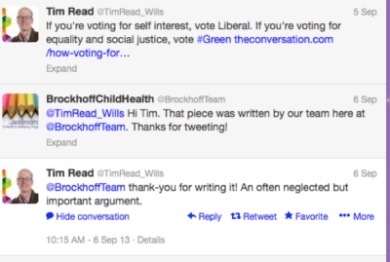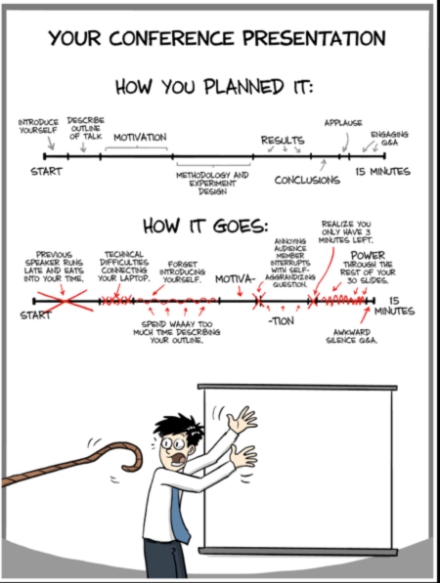Jack and Jill went up the hill to fetch a pail of water….but before they left, Jack logged onto Facebook to ask his friends where the best well was. Jill tweeted about their upcoming adventure with the hash tag #fetchingwater. They both checked in through their Facebook when they arrived on the hill and shared a photo of #fetchingwater through their Instagram accounts. Then Jack wrote a blog.
These days, it seems most of us can’t go through a day, or a couple of hours in my case, without using some form of social media. According to the Yellow Social Media Report 62% of internet users in Australia have a presence on social networking sites, with Facebook the clear leader. We are using social (social media) to catch up with family and friends, share photos, coordinate social events and one in five of us are using social for commercial purposes by following our favourite brands (Yellow Social Media Report). Given how powerful social is in connecting with others and sharing information, it was only natural that our research program here at The University of Melbourne should be on there!
So in late 2010, we jumped online.
One of our greatest challenges was finding our audience. We are a research only team funded by a philanthropic gift. We have a small number of PhD students but do not do any teaching or have much involvement with students at all. We have a niche research area of child health. Previous to any involvement on social our key outlet for completed research was journal articles, which would be published and circulated through academic contacts. If we were lucky we would get something published in a newspaper maybe once or twice a year. Journalists aren’t typically interested in anything that 1. They have heard before or 2. Doesn’t raise controversy or have an obvious dramatic impact.
So our aim was to firstly make ourselves known, create an online brand and raise awareness of our little program. Once we had done this we wanted to increase our engagement and interactions with our followers.
I have to admit, it hasn’t been all roses and daisies, and we still have a long way to go, but this is what we have learnt.
- Social is ALL about engagement. Yes you want to promote your brand but endless self-promotion without generating conversation can push people away. It is absolutely fine to post about projects and people but don’t forget to pose questions, reply to others’ posts, and share similar content. The rule of thumb is 20/80. 20% posting your content, 80% interacting with others. Before you post consider ‘Why do I care and why would they share?’ Search for people talking about you or your content and interact with them!

- ‘You must entertain in order to educate.’ Not all your content needs to be serious. This point goes hand in hand with point 1. Part of our social media strategy includes about 2-3 ‘fun’ posts related to research per week. Given that much of our audience are academics, this is something they can relate too. Some great examples that have worked for us are PhD comics and regular posts about ‘Why writing a thesis is harder than having a baby’ (Point 1. Three months before your due date, your doctor doesn’t say ‘’I want you to go back and re-do the first trimester’s work”). It’s funny and when people can relate they like and share. And bingo, you have increased your reach! Any new fan obtained through a ‘fun’ post will be new eyes when the next informative post goes out.

(Image thanks to phdcomics.com) - Maintain a constant presence. You see, with Facebook’s algorithms, the less you are on Facebook, the less someone interacts with you. The less someone interacts with you, the less likely they will see your content in their news feed. If you are going to invest in social media, make sure you commit. At least 1 post per day (or two).
- Create a voice. Give your social a voice. Create a persona. People will relate to you and your content more if they feel it comes from a person and not a robot/machine. The reason we have entered into the blogosphere is to show people our personal side and share with people just why we love our job. Right now you are learning about my job and the triumphs and tribulations of it. Hopefully this will make you take a look at our social pages too, maybe even our website? If I’m lucky you may just share! Bang, I’ve done my job.
- Plan, plan, plan. My final piece of advice is to plan. This way you can keep a constant presence on social without flipping out and resorting to posting nonsense just for the sake of it. Have a conversational calendar that outlines discussion topics for the next few weeks or months. This plan will reduce the burden on staff and they will be approached in advance for material that will be posted. Particular content can be allocated for particular days of the week to maintain consistency. Additional breaking news can be put up as an extra post/tweet.
What kind of content has worked for us? Photos of staff, project and participants (make sure you have consent!), short videos, ‘fun’ posts (as previously discussed), tips from PhD students, expert perspective, upcoming seminars, and conferences and publications.
Be prepared. Have a thick skin. Respond to everyone. Delete spam.
So don’t view social as a challenging hill to climb. Be like our modern day Jack and Jill. Use social as a means to an end. There is very little danger that you will fall down and break your crown – and if you do you can tweet for a doctor: #crackedskull
Facebook.com/BrockhoffChildHealth
Pgh.unimelb.edu.au/childhealth
Written by Alana Pirrone-Savona
Media & Communications Officer for the Jack Brockhoff Child Health & Wellbeing Program
The University of Melbourne
apirrone@unimelb.edu.au

hahah great blog Alana! #thanksforthephonecharger
Great blog. Very entertaining and useful.
Very interesting. Don’t wish to appear picky, but Jack and Jill went up the hill to fetch a “pail” of water (curse of the autocorrect!).